Jaw Shaping in Tel Aviv
Search and Compare the Best Clinics and Doctors at the Lowest Prices for Jaw Shaping in Tel Aviv

Find the best clinics for Jaw Shaping in Tel Aviv
No pricing info available
Malaysia offers the best prices Worldwide
Price: $ 672
From 109 verified reviews
Y N, 22 September 2020
Excellent medical center, with friendly staff and highly qualified doctors.Thank you for your work.My operation was successful
Tel Aviv Sourasky Medical Center (Ichilov Medical Center), located in Arison New Hospitalization Building, Tel Aviv, Israel offers patients Jaw Shaping procedures among its total of 428 available procedures, across 29 different specialties. Currently, there's no pricing information for Jaw Shaping procedures at Tel Aviv Sourasky Medical Center (Ichilov Medical Center), as all prices are available on request only. There are many specialists available at the Clinic, with 13 in total, and they are accredited by JCI Accredited
Compare Before & After Photos of _procedure_photos.phpJaw Shaping
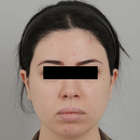
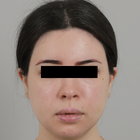
Front view
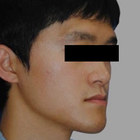

Front view
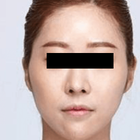
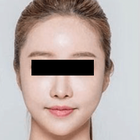
Front view
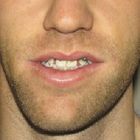

Front view
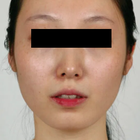
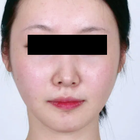
Front view
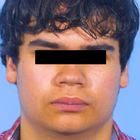
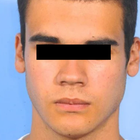
Front view
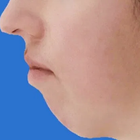
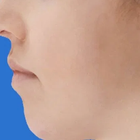
Full-side view
WHY US?
At Medijump, we're making medical easy. You can search, compare, discuss, and book your medical all in one place. We open the door to the best medical providers worldwide, saving you time and energy along the way, and it's all for FREE, no hidden fees, and no price markups guaranteed. So what are you waiting for?

Free

Best Price

Widest Selection

Risk-Free
What you need to know about Jaw Shaping in Tel Aviv

Also known as Mandibular Angle Reduction, V Line Surgery or Jawline Surgery, Jaw Shaping Surgery is performed with the purpose of narrowing the lower part of the face, with particular emphasis on the mandible (lower jaw) and the muscular attachments.
A wide jaw angle can be caused by enlarged muscle, bone, or a combination of the two. A prominent jaw angle or square jaw is considered a masculine trait, particularly in Asian countries. Therefore, many people opt for surgical correction to get their desired look. The surgery can shorten an overly long jaw and change a square-shaped face to an oval shape. Some people with temporomandibular joint (TMJ) disorders, uneven jaws, or jaws that causes pain when chewing might also undergo this surgery to correct pain.
There are several critical elements involved in the surgery, including the angles of the jaw, the body of the mandible, and the shape of the chin. While the procedure is typically performed on women with a square jawline who want a more feminine look, it can be done on both men and women. However, this procedure may not work for people who want to feminize a male’s face since males usually have a taller and longer face. Therefore, a V Line Surgery would only make a face look more elongated.
What does a Jaw Shaping Procedure Involve?
Various developmental, congenital, or some rare disorders such as acromegaly can cause enlarged mandibles, which can be corrected by Jawline Surgery. It is ideal for those with overly square or U-shaped jawline, overly manly jaw shape, bloated cheeks, and double chin. If you are considering V line surgery, you will need to be in a good state of physical and mental health.
Prior to the surgery, you will be examined by X-rays and 3D CT scans. Your surgeon will analyze and evaluate the overall structure of your jaw to create a plan to produce the desired result. You will also need to undergo medical tests such as ECGs to ensure that you don’t have a condition that may put you in danger or compromise the success of the surgery.
Surgery is performed under general anesthetic through tracheal intubation and leaves minimal scarring. You will need to fast for 8 hours before the surgery. Oscillating saws are used to reshape the jaw. The surgery can be performed inside the mouth (intraoral) or from outside the mouth (postauricular). The intraoral approach is the most widely used method. With this approach, an incision is made between the gum and the back of the cheek next to the jaw. Then, the jawline is carved out into their desired shape. A portion of the masseter muscle is shaved off, and the outer portion of the bone is chipped off. This approach is best for patients who aim to narrow their frontal view since the change is subtle and natural.
If the patient wants to change the appearance of the jaw angle from a side view, the overall contour of the bone will need to be changed. This means that the patient needs a full-thickness bone removal. Although it can be done through the intraoral approach, the surgeon’s view during this approach is very limited, which can decrease the precision of the procedure. Therefore, the best approach is from outside of the mouth or postauricular. To get direct access to the bone, the surgeon makes an incision hidden around the ear. This approach can remove a more substantial amount of bone. The recovery time using this approach is also much shorter than the intraoral approach since the swelling stays confined to the neck area.
How Long Should I Stay in Tel Aviv for a Jaw Shaping Procedure?
The typical length of time for Jaw Shaping is usually around 2 hours. Nevertheless, you have to stay in the hospital for around one to two days for initial recovery where you will be monitored to make sure everything is fine. After being discharged, plan to stay in the Tel Aviv for 10 to 14 days or until the surgeon says you can go home. The stitches are generally removed within two weeks after surgery, though this may vary from patient to patient.
What's the Recovery Time for Jaw Shaping Procedures in Tel Aviv?
Immediately after the surgery, you will need to wear a facial mask that presses tightly against the skin around the jaw to keep the post-surgery swelling down. Also, you will not be allowed to eat foods that require chewing because it will delay the recovery and can cause bleeding. If you undergo the intraoral approach, your food intake will be limited for a considerable length of time. You may feel some swelling, numbness, and discomfort around the incision for several days, but the surgeon will prescribe medications to help with the pain.
The recovery period can be different for each individual; some people may be able to go back to their regular routines after seven to ten days, but others may need more time to fully recover. Avoid doing any vigorous activity that increases your blood pressure for several weeks, such as jogging and other exercises. Most of the visible signs, such as swelling and bruising, should disappear within a few weeks. Symptoms such as hematoma and infection are common, and will usually subside within three to six months post-surgery.
What sort of Aftercare is Required for Jaw Shaping Procedures in Tel Aviv?
You must follow your surgeon aftercare instructions strictly to accelerate your recovery and minimalize possible complications. The instruction will likely include the following recommendations:
- Food intake. You may need to consume a liquid diet for a week after surgery as drinking your food is less painful and prevents trauma to the jaw area. You should be able to consume hard foods within one month.
- Oral hygiene. An antibacterial mouth rinse will keep your mouth and incision area clean, which will decrease the possibility of infection.
- Avoid tobacco and alcohol. Smoking and drinking alcohol should be avoided for a while.
- Keep the head elevated. You should keep your head elevated even when you are sleeping as it is the key to reduce swelling.
- Compression bandage. You are recommended to wear a compression bandage at all times for the first three days and while sleeping for the first week or two.
- Avoid strenuous activity. Do not do any heavy lifting or exercise for at least a month. However, do walk around and practice some gentle movement.
- Attend follow up appointments. The surgeon will check your progress to avoid any complications.
What's the Success Rate of Jaw Shaping Procedures in Tel Aviv?
Jaw shaping surgery is a safe procedure when performed by a trained surgeon. Around 94% of patients express their satisfaction with this procedure. However, it is important to have realistic expectations. You should also be aware of the possible risks that this surgery may cause. These risks include infection, asymmetry, seroma, deep vein thrombosis, pulmonary embolism, and hematoma. Partial numbness of the jaw can also happen due to nerve damage.
Are there Alternatives to Jaw Shaping Procedures in Tel Aviv?
If you wish to reshape your jaw but do not want to undergo surgery, there are non-invasive options available. The most popular alternatives are Botox and Dysport, which can effectively contour the jaw by relaxing the appearance of a square jaw. This procedure shrinks the masseter muscle by weakening it. These injectable can also be used to correct facial asymmetry around the jawline area. Since they are non-invasive, you can return to your daily activates right away and they offer a subtler shift in your appearance. However, these techniques are limited to cases in which the masseter is enlarged and may not work as well as V Line Surgery.
Whilst the information presented here has been accurately sourced and verified by a medical professional for its accuracy, it is still advised to consult with your doctor before pursuing a medical treatment at one of the listed medical providers
No Time?
Tell us what you're looking for and we'll reachout to the top clinics all at once
Enquire Now

Popular Procedures in Tel Aviv
Prices Start From $70

Prices Start From $28

Prices Start From $1,945

Prices Start From $275

Recommended Medical Centers in Tel Aviv for Jaw Shaping

- Interpreter services
- Translation service
- Religious facilities
- Medical records transfer
- Medical travel insurance
- Health insurance coordination
- TV in the room
- Safe in the room
- Phone in the room
- Private rooms for patients available

- Interpreter services
- Translation service
- Religious facilities
- Medical records transfer
- Medical travel insurance
- Health insurance coordination
- TV in the room
- Safe in the room
- Phone in the room
- Private rooms for patients available

- Interpreter services
- Translation service
- Religious facilities
- Medical records transfer
- Medical travel insurance
- Health insurance coordination
- TV in the room
- Safe in the room
- Phone in the room
- Private rooms for patients available

- Interpreter services
- Translation service
- Religious facilities
- Medical records transfer
- Medical travel insurance
- Health insurance coordination
- TV in the room
- Safe in the room
- Phone in the room
- Private rooms for patients available

- Interpreter services
- Translation service
- Religious facilities
- Medical records transfer
- Medical travel insurance
- Health insurance coordination
- TV in the room
- Safe in the room
- Phone in the room
- Private rooms for patients available

- Interpreter services
- Translation service
- Religious facilities
- Medical records transfer
- Medical travel insurance
- Health insurance coordination
- TV in the room
- Safe in the room
- Phone in the room
- Private rooms for patients available

- Interpreter services
- Translation service
- Religious facilities
- Medical records transfer
- Medical travel insurance
- Health insurance coordination
- TV in the room
- Safe in the room
- Phone in the room
- Private rooms for patients available

- Interpreter services
- Translation service
- Religious facilities
- Medical records transfer
- Medical travel insurance
- Health insurance coordination
- TV in the room
- Safe in the room
- Phone in the room
- Private rooms for patients available

- Interpreter services
- Translation service
- Religious facilities
- Medical records transfer
- Medical travel insurance
- Health insurance coordination
- TV in the room
- Safe in the room
- Phone in the room
- Private rooms for patients available
Jaw Shaping in and around Tel Aviv
About Tel Aviv
Tel Aviv-Yafo commonly referred to as just Tel Aviv, is the economic and technological center of Israel. Located on the Israeli Mediterranean coastline, the city is popular for its glimmering beaches, creative culture, non-stop nightlife, and architectural heritage. As Israel is becoming a popular medical tourism hub, thousands of medical tourists who seek medical treatments in this country choose Tel Aviv as their destination. The city’s medical system, as well as its doctors and medical professionals, are world-renowned. It boasts some of the finest medical centers, staffed with highly trained doctors and nurses. International tourists looking for world-class, innovative medical treatments can get any procedure they need for a fraction of the cost they would have to pay in their home countries.
Popular Parts of Tel Aviv
There’s no shortage of activities in Tel Aviv. With at least 300 days of sun per year, this hip and bustling city offer shimmering beaches for any sun-chaser. Gordon Beach is one of the most popular in the city. It boasts clear blue waters, volleyball courts, and a boardwalk full of restaurants serving fresh fish and Israeli cuisine. Besides the beaches, visitors usually go to the Tel Aviv Museum of Art. This impressive gallery is set inside the modern ‘envelope’ building by American architect Preston Scott Cohen. The museum provides a lot of activities and collections to see, but the highlight is the collection of Impressionist and post-Impressionist art, which features works by Pissarro, Renoir, Monet, Picasso, Van Gogh, and many more. Visitors who want to relax can visit Park HaYarkon, which is the city’s largest green space.
Transport in Tel Aviv
International tourists will arrive at Ben Gurion Airport, which is located 20 kilometers southeast of Tel Aviv. It serves flights to and from many cities around the world, including Seoul, Amsterdam, New York, and Beijing. The city’s relatively new overground railway system is the most affordable and easiest way to get around. Buses are available, but the routes can be a bit confusing. Taxis are widely available around the city and they are easy, albeit expensive, way to get around.
Visas in Tel Aviv
Holders of passports issued by 99 countries, including all EU countries, Canada, Russia, and the US can enter and stay in the country for up to 3 months without a visa. Most other nationals are required to obtain a visa prior to arrival and are recommended to contact their nearest embassy of Israel as some countries need a confirmation from the Israeli government before a tourist visa is issued.
Weather in Tel Aviv
Tel Aviv experience a typical Mediterranean climate. The winters are rainy and the summers are hot. The temperatures in the summer (June to August) can rise to 31°C - 34°C and the humidity can reach over 80%. Spring and fall have pleasant weather since the temperatures are not too high or low.
Additional Info
- Local Currency: New Israeli Shekel (ILS) is the official currency. 1 USD will get you approx. 3.5 ILS.
- Money & Payments: It’s easy to find ATMs around the city. Credit cards are widely accepted. Tipping is common, but typically not expected.
- Local Language: Hebrew is the official language, while Arabic has a special status as a semi-official language. Most people can speak English fairly well.
- Local Culture and Religion: Most of the population adheres to Judaism. Islam is the largest minority religion in the city, followed by Christianity.
- Public Holidays: The city celebrates several public holidays, such as Independence Day, Hanukkah, and Jerusalem Day.
Popular Searches
- Plastic Surgery in Thailand
- Dental Implants in Thailand
- Hair Transplant in Thailand
- Breast Augmentation Thailand
- Gastric Sleeve in Thailand
- Gender Reassignment Surgery in Thailand
- Laser Hair Removal in Bangkok
- Botox in Bangkok
- Dermatology in Bangkok
- Breast Augmentation in Bangkok
- Coolsculpting in Bangkok
- Veneers in Turkey
- Hair Transplant in Turkey
- Rhinoplasty in Turkey
- Stem Cell Therapy in Mexico
- Rhinoplasty in Mexico
- Liposuction in Mexico
- Coolsculpting in Tijuana
- Rhinoplasty in Korea
- Scar Removal in Korea
- Gastric Sleeve in Turkey
- Bone Marrow Transplant in India
- Invisalign in Malaysia
- Plastic Surgery in the Dominican Republic
- Tummy Tuck in the Dominican Republic
- Plastic and Cosmetic Surgery in Poland
- Rhinoplasty in Poland
- Hair Implant in Poland
- Dental Implants in Poland
- IVF in Turkey

